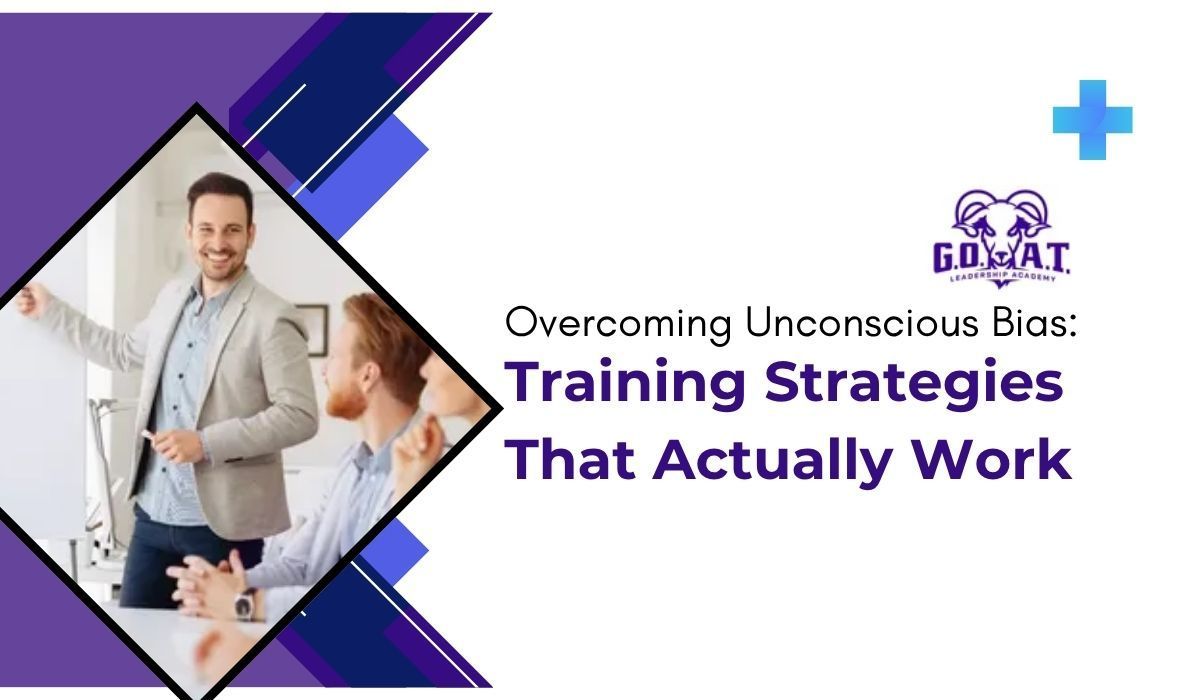From Bias to Belonging: Creating Inclusive Workplaces
In today’s workplaces, inclusion is more than a buzzword — it’s a critical driver of trust, engagement, innovation, and retention. Yet many organizations struggle to shift from diversity as numbers toward creating a true sense of belonging.
At G.O.A.T. Leadership Academy, Dr. Karen Walker emphasizes that building an inclusive culture requires intentionality, behavior change, and ongoing commitment. Below, you’ll find a roadmap — informed by her philosophy — to help your organization move from bias toward belonging.
Why Belonging Matters — Beyond Diversity Metrics
While diversity (representation) and equity (fair access) are essential, belonging is what transforms an environment from tolerated to thriving. When people feel they belong:
- They engage more fully, speak up, and bring their whole selves.
- They are more creative, collaborative, and resilient.
- They stay—reducing costly turnover and preserving institutional knowledge.
Step 1: Surface and Acknowledge Biases
Before you can build belonging, you must understand where exclusion or bias show up.
- Conduct bias audits — in hiring, performance reviews, meeting dynamics, communication patterns.
- Use anonymous climate surveys, focus groups, or “speak-up” channels to surface hidden issues.
- Provide training that helps people recognize unconscious bias in everyday decisions.
As Dr. Walker asserts:
“True inclusion is not just about inviting everyone to the table — it’s about ensuring every voice is heard and every contribution valued.” Goat Leadership Academy
That hearing requires addressing biases that silence or devalue some voices.
Step 2: Model Inclusive Behaviors from the Top
Culture flows from leadership behavior. If leaders don’t act inclusively, policies won’t stick.
- Encourage leaders to practice active listening and empathy in decision-making.
- Promote transparency around decision criteria and provide opportunity for feedback.
- Hold leadership accountable — reward inclusive behaviors, not just outcomes.
Step 3: Embed Inclusive Habits Into Daily Work
Belonging is experienced in the everyday, not just in speeches or branding.
- Run “inclusion check-ins” in meetings: Who hasn’t spoken? Are all perspectives being invited?
- Rotate roles such as meeting facilitator, note-taker, or devil’s advocate to democratize influence.
- Encourage team norms like calling in (not calling out), pausing for reflection, and clarifying intent vs impact.
- Use culturally responsive practices (e.g. inclusive language, flexible scheduling, differing communication styles).
Step 4: Provide Safe Spaces & Reflective Learning
People grow when they can reflect, unlearn, and calibrate without judgment.
- Set up peer groups or “belonging circles” where employees share experiences and challenges.
- Offer coaching or safe feedback channels for leaders to explore blind spots.
- Create regular reflection rituals (e.g. journaling, “pause & reflect” prompts, group debriefs).
Step 5: Measure, Iterate & Reinforce
Belonging is not a one-time fix; it’s an ongoing journey.
- Use surveys that measure psychological safety, trust, sense of belonging — not just representation.
- Track retention, engagement, and internal mobility differentials across demographic groups.
- Iterate interventions: pilot, collect feedback, refine.
- Recognize and celebrate inclusive behaviors and practices across all levels of the organization.
As Dr. Walker underscores in your ROI content:
“Inclusive leadership is not an expense — it’s an investment that multiplies returns across the entire organization.” Goat Leadership Academy
Belonging amplifies performance, loyalty, and innovation.
Challenges & Pitfalls to Watch For
- Tokenism: Inclusion efforts that center a few individuals without systemic change create burden, not belonging.
- One-off training: A workshop is not enough. Habits change through repetition, reinforcement, and accountability.
- Resistance & defensiveness: Address pushback with humility, learning, and transparency—not shame.
- Overemphasis on metrics: Numbers matter, but stories, experiences, and culture shifts are the true indicators of belonging.
Conclusion
Moving from bias to belonging requires more than policies—it demands behavioral transformation, leadership commitment, and an ongoing willingness to learn. Through bias awareness, role modeling, everyday inclusive habits, reflective spaces, and measurement, organizations can cultivate a culture where people don’t just work—they feel they belong.
Dr. Walker’s vision is clear:
“True inclusion is not just about inviting everyone to the table — it’s about ensuring every voice is heard and every contribution valued.” Goat Leadership Academy


